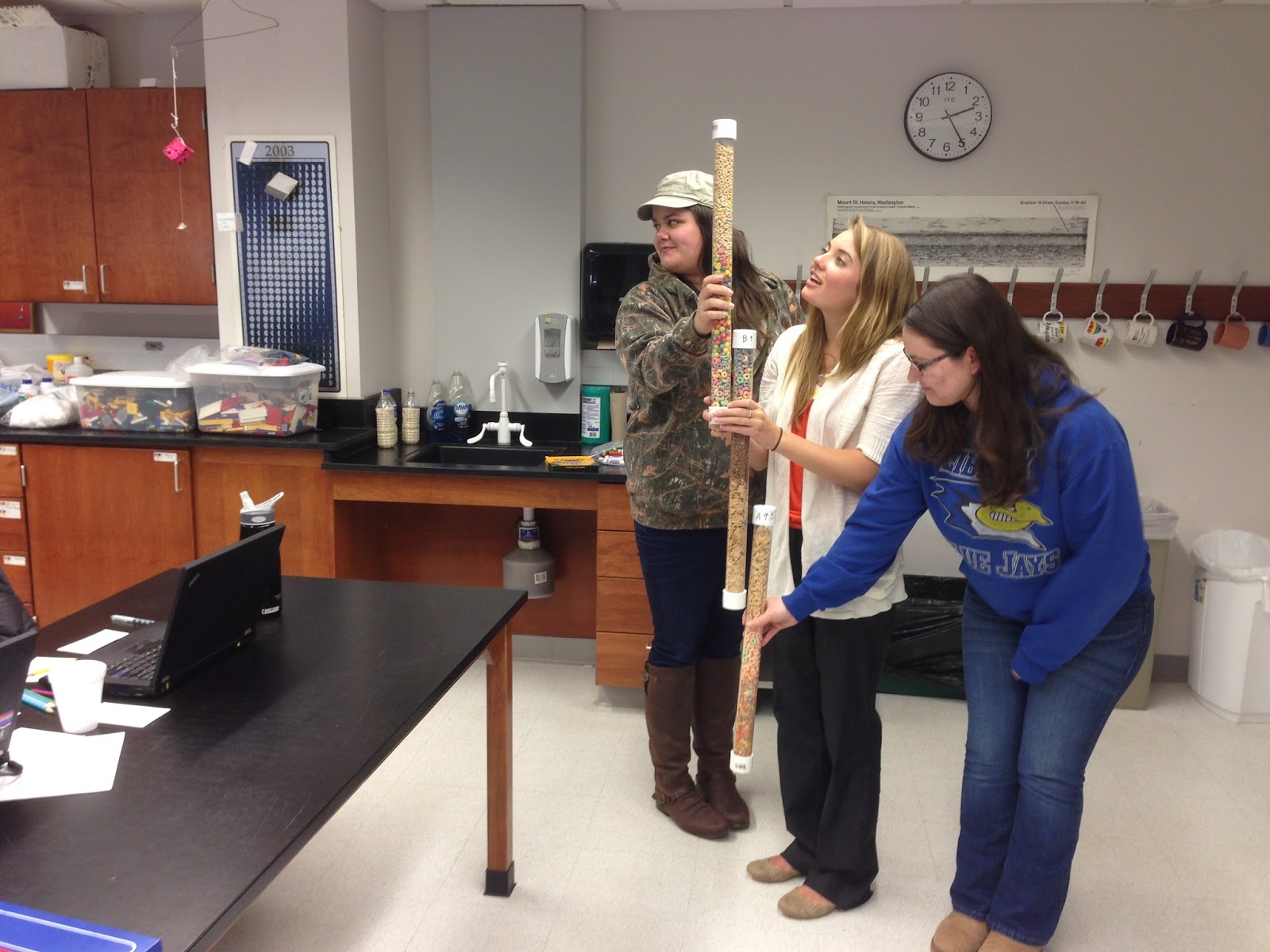They simulate a half-life by shaking the M & M's and dropping them onto a sheet of paper. Roughly half of them will fall with the blank side up, just as half of the radioactive atoms decay into another element during a half-life. The students will remove the blank M & M's, graph the number of undecayed ones, and shake those, simulating another half-life. The students will pool their data, examine the effect of sample size, and assess how many half-lives it takes to run out of countable undecayed atoms. This model explains why real radiometric dating labs require minimal starting sample sizes and cannot give dates beyond a certain range (>40,000 yrs) for radiocarbon.
http://serc.carleton.edu/NAGTWorkshops/time/activities/61334.html
The 50-minute group-based activity for hundreds of students starts by constructing bio-zones for a given set of fossil ranges. Results are reviewed using a sequence of clicker questions to discuss the optimal biostratigraphic decisions, the necessary types of thinking, and how to articulate a concise yet complete textual description of corresponding biozones.
A set of stratigraphic logs is then used to interpret changes in depositional environment across space and time. Students also decide (and justify decisions) on the optimal choice of fossils for use when interpreting variations in depositional environment. The final result is an interpreted geologic section based on stratigraphic and biostratigraphic data.
This interpretive exercise is only three weeks into a first course on Earth and life through time, so guidance is provided using carefully designed question sequences posed using "clicker" (personal response system) and/or for individual or whole class discussion.












No comments:
Post a Comment